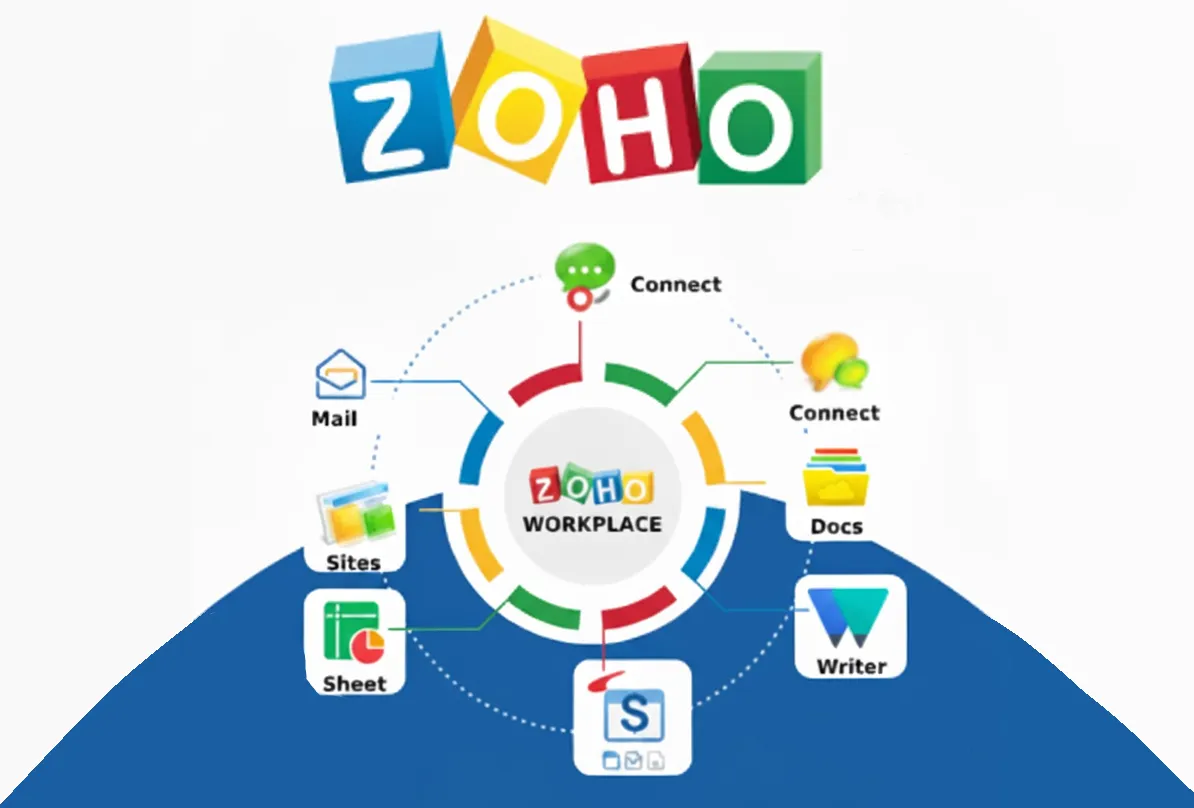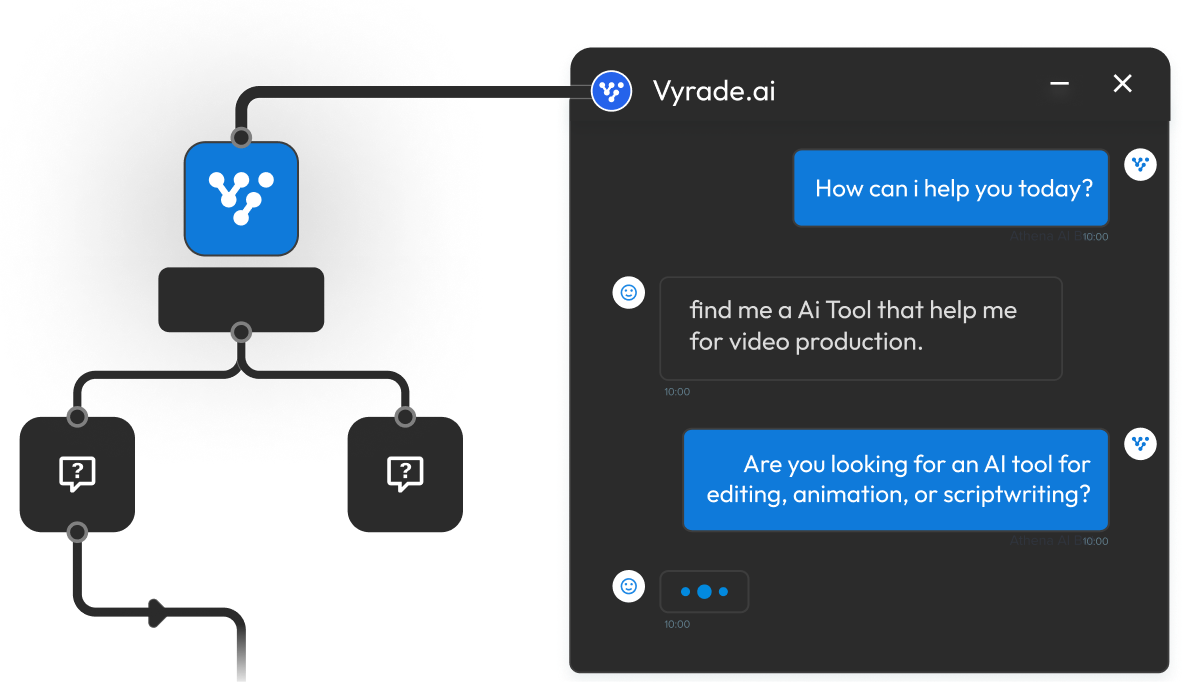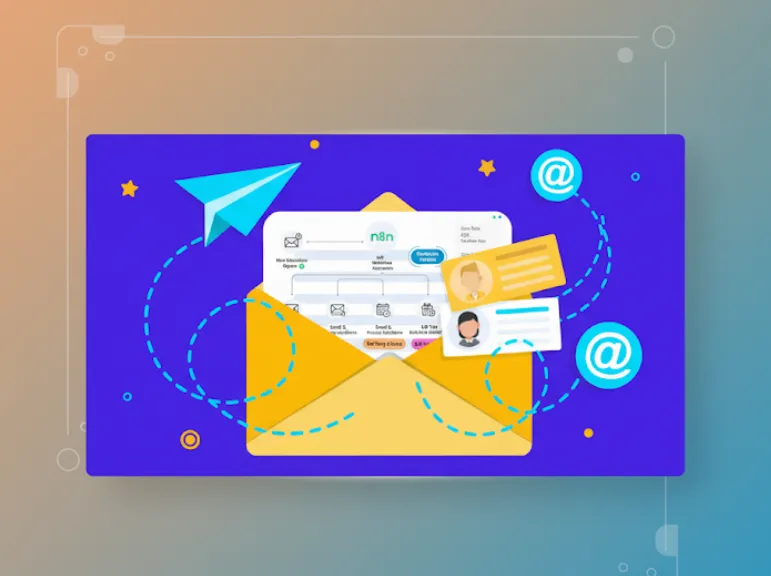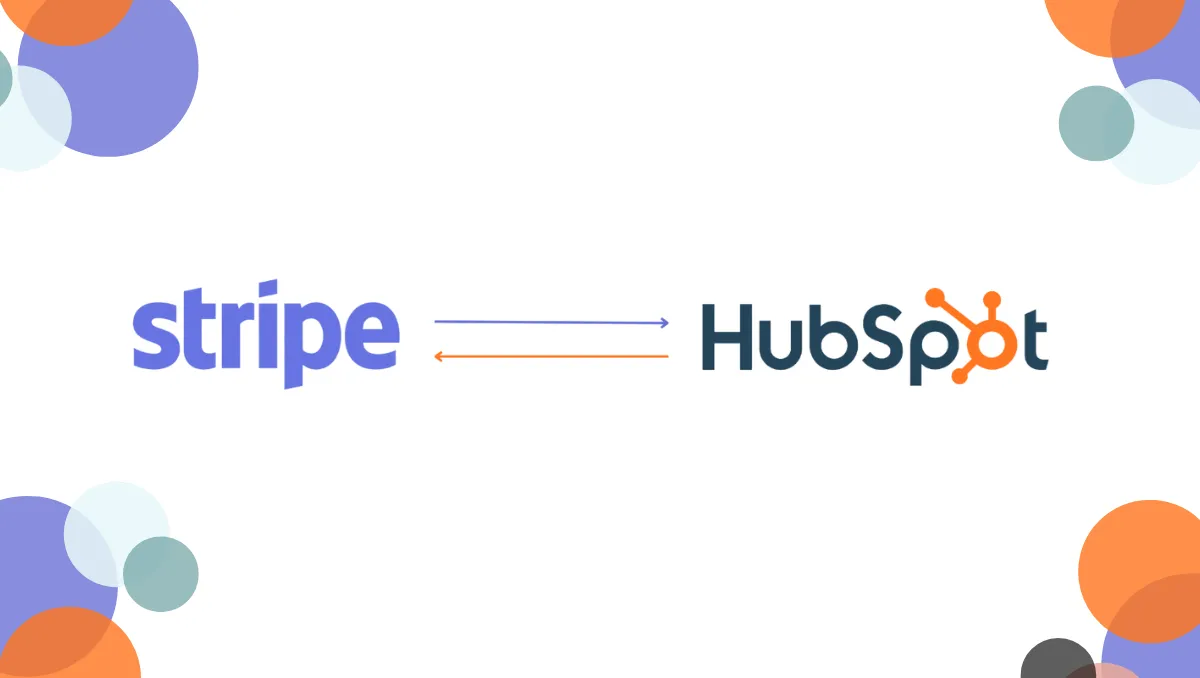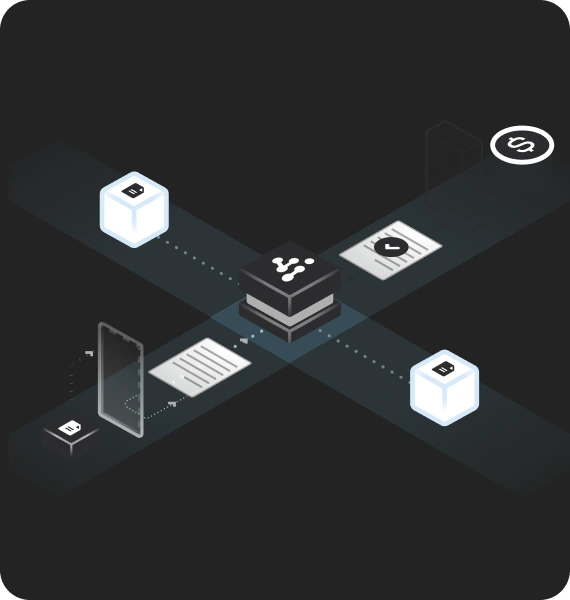Sales teams lose countless hours every week chasing admin, logging calls, updating deals, re-assigning leads, and sending repetitive follow-ups. It’s not just a productivity drain; it’s a silent revenue leak.
With Zoho CRM workflow automation, those repetitive tasks vanish into background logic. Leads are instantly routed, contacts upserted, deals scored, and follow-ups triggered the moment activity happens without human intervention.
This guide walks through how B2B and service teams automate their sales process inside Zoho CRM using workflow rules, blueprints, and external orchestration tool like n8n turning manual sales ops into a self-driving system.
Why Sales Teams Need Workflow Automation in Zoho CRM
Manual CRM work feels harmless until scale hits.
- Inconsistent follow-ups: A hot lead waits days for contact while reps juggle spreadsheets.
- Duplicate records: Marketing, sales, and support enter the same lead three different ways.
- No ownership clarity: Who’s supposed to call back first? Who owns the deal now?
- Fragmented data: Conversations live in emails, not in the CRM where insights belong.
A properly automated Zoho CRM workflow eliminates these bottlenecks by connecting triggers (lead creation, status change, form submission) with instant, rule-based actions updating records, creating tasks, and notifying the right people automatically.
What Is Zoho CRM Workflow Automation?
Zoho CRM workflow automation uses rules, conditions, and actions to handle repetitive sales operations automatically. You define the logic once; Zoho runs it every time.
Example:
When a new lead from your website arrives → upsert contact → assign to the right rep → create a task → send a personalized welcome email → tag as “High Intent.”
Each automation can consist of:
- Trigger: The event that starts the workflow (Lead Created, Field Updated, Stage Changed).
- Condition: Criteria that define when to run (Lead Score > 50, Country = US).
- Action: The resulting tasks (Assign Owner, Send Email, Create Task, Call Webhook).
When combined with Blueprints (for sales stage progression) and Deluge functions (for logic and API calls), your CRM becomes a proactive sales engine rather than a static database.
Who Should Use Zoho CRM Workflow Automation
- Sales managers who need predictable follow-ups and clean reporting.
- Account executives managing dozens of active deals simultaneously.
- Revenue operations (RevOps) teams building scalable playbooks.
- Customer success teams tracking renewals and upsells.
- Service companies managing client onboarding or consultation requests.
If your reps spend more time updating records than talking to customers, automation is your next growth lever.
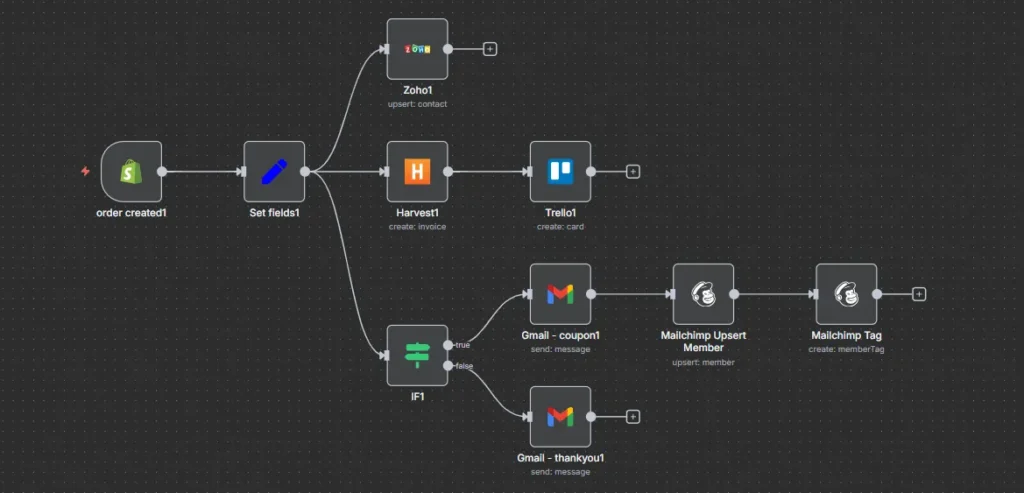
Step-by-Step Workflow: Automating Your Sales Pipeline
Here’s how an automated sales workflow inside Zoho CRM typically functions, from first contact to closed deal.
1. Capture & Upsert Leads Automatically
Every inbound form, campaign, or referral should feed directly into Zoho CRM.
- Use Zoho Forms, Webhooks, or an n8n trigger to catch submissions.
- The Upsert Contact/Lead operation checks for existing records by email or phone preventing duplicates.
- Map fields such as First Name, Last Name, Company, Email, Phone, Country, Source, and UTM Parameters.
Pro Tip: Always choose a single unique key (usually email) for all upserts. It’s the simplest way to maintain CRM hygiene.
2. Qualify & Score Leads in Real Time
Use Zoho’s built-in lead scoring or custom fields to rank prospects.
- Apply points for engagement (opens, replies, demo bookings).
- Deduct points for bounces or irrelevant industries.
- When score > 70, trigger an “SQL Ready” tag or move lead to Deal stage automatically.
Automation logic example:
If Lead Score > 70 AND Country = 'US'
→ Assign to Senior Sales Rep
→ Create Task 'Call within 15 mins'
→ Send intro email template 'Welcome_USA'
3. Assign Owners & Tasks via Rules
No more manual distribution.
- Use Assignment Rules to route leads by region, product, or deal size.
- Create tasks automatically (e.g., “Demo Booking” or “Call Follow-Up”).
- For larger teams, set up Territory Management for region-based ownership.
In n8n:
Add an IF node → If order value > 50 → send coupon; else send thank-you.
Create task nodes (Trello, Asana, or Zoho Tasks) branching accordingly.
4. Communicate Instantly via Automated Emails
Connect Zoho CRM with Gmail, Outlook, or Zoho Mail using native or external integrations.
- Send confirmation emails the moment a lead enters the system.
- Trigger “nurture” sequences via Zoho Campaigns or Mailchimp.
- Personalize with merge fields:
Hi {{$node["Set fields"].json["customer_firstname"]}},
“Thanks for reaching out here’s what happens next.”
Set an alternate follow-up path for unqualified leads with a polite decline or content offer.
5. Sync Deals & Finance Tools
When leads convert, automatically:
- Create a Deal record in Zoho with stage = “Negotiation” or “Closed Won.”
- Send order/invoice data to Zoho Books, Harvest, or QuickBooks via webhook.
- Generate receipts or billing reminders without manual effort.
In your workflow JSON, this is where your Harvest node fits perfectly pulling processed_at and currency directly from the CRM event.
6. Tag & Segment in Marketing Platform
Maintain unified communication across CRM and marketing.
- Upsert contact to Mailchimp → apply
High-ValueorFollow-Up Neededtags. - Trigger re-engagement campaigns for dormant deals.
- Sync unsubscribe or bounce data back to Zoho for clean analytics.
This closes the gap between sales performance and marketing attribution, ensuring your entire funnel communicates in real time.
7. Report, Measure, and Improve
Automation isn’t “set and forget.”
Every workflow should feed metrics back into Zoho dashboards:
- Speed to lead: Minutes between creation and first contact.
- Follow-up SLA compliance: % of tasks completed within deadlines.
- Stage conversion: MQL → SQL → Won.
- Duplicate rate: Before vs. after automation.
- Pipeline velocity: Average time between stages.
By automating both input and reporting, you make pipeline management data-driven and effortless.
Automate Zoho CRM Workflow JSON
Here’s a simplified n8n import workflow Sales Automation.
Key Field Mapping for Sales Automation
| Category | Essential Fields | Notes |
|---|---|---|
| Lead/Contact | First Name, Last Name, Email, Phone, Country, Source | Use email for upsert |
| Account (B2B) | Company Name, Domain, Industry, Region | Link to contact |
| Deal | Deal Name, Amount, Stage, Owner, Expected Close | Auto-create after qualification |
| Custom Fields | Lead Score, Product Interest, Campaign ID | Used in conditional logic |
| Tags | High Intent, Repeat, VIP | Used in segmenting Mailchimp/Zoho Campaigns |
Benefits of Zoho CRM Workflow Automation
- Faster sales velocity: Reduce lead response time from hours to minutes.
- Clean data hygiene: Automatic deduplication and consistent mapping.
- Better alignment: CRM, marketing, and finance tools stay synchronized.
- Scalable processes: No new headcount needed as pipeline volume grows.
- Predictable experience: Every customer receives timely, accurate communication.
When done right, teams report 20–35% higher conversion rates and a 40% drop in missed follow-ups.
Suggested Alternatives for Building Zoho Automations
1. Zoho Flow (Native Integration Tool)
Best for: Zoho-centric teams needing cross-app triggers.
Pros: Pre-built connectors (Books, Desk, Campaigns); native auth; visual editor.
Cons: Limited complex branching; slower for large datasets.
Use Case: Push form entries to CRM, trigger Slack alerts, sync invoices automatically.
2. Blueprints + Deluge Functions
Best for: Structured, stage-based sales processes.
Pros: Enforces required fields and approvals at every stage.
Cons: Limited UI for non-technical users; not ideal for multi-app workflows.
Use Case: Govern “Lead → Demo → Proposal → Won” transitions with validation.
3. n8n (Open-Source Automation Platform)
Best for: Teams needing full control and privacy.
Pros: Self-hosted, advanced branching, no task limits.
Cons: Requires setup and hosting; initial learning curve.
Use Case: Recreate end-to-end CRM workflows (Zoho → Gmail → Mailchimp → Trello).
4. Make (Integromat)
Best for: Visual scenario building across multiple systems.
Pros: Flexible modules, great error handling, cheaper at volume.
Cons: Needs clean mapping; not ideal for massive datasets.
Use Case: Auto-create deals, sync notes, post Slack summaries.
5. Zapier
Best for: Fast, lightweight automations.
Pros: Huge app catalog; easy for non-tech users.
Cons: Costly at scale; limited dynamic logic.
Use Case: Capture Typeform submissions → add to Zoho → email confirmation.
6. Pabbly Connect / Integrately
Best for: Cost-sensitive teams needing pre-built flows.
Pros: Affordable pricing; quick setup.
Cons: Smaller app library; limited customization.
Use Case: SMBs connecting website forms to Zoho CRM with instant notifications.
7. Custom Middleware (APIs + Webhooks)
Best for: Enterprises or agencies needing 100% flexibility.
Pros: Infinite control; integrate legacy tools.
Cons: Requires developer support and maintenance.
Use Case: Direct API sync between Zoho CRM, ERP, and billing tools.
Implementation Best Practices
- Map before building: Define every trigger, field, and endpoint first.
- Use upsert logic: Prevent duplicates by keying on email or phone.
- Guard email sends: Add IF checks for nulls or unsubscribes.
- Handle rate limits: Use Wait or Queue nodes (100–500 ms delay).
- Backup JSON: Export and version workflows weekly.
- Test with dummy data: Always run sandbox flows before production.
- Log everything: Create an error-logging branch for every critical node.
Business Impact: From Busywork to Predictable Revenue
| Metric | Before Automation | After Automation |
|---|---|---|
| Lead Response Time | 4–6 hours | <15 minutes |
| Duplicate Rate | 12–18% | <2% |
| Missed Follow-ups | Frequent | Rare |
| Deal Stage Visibility | Partial | Real-time |
| Rep Productivity | 60% admin / 40% selling | 25% admin / 75% selling |
Automation transforms chaos into consistency and consistency closes deals.
FAQs
It automatically triggers actions like assigning reps, creating tasks, sending emails, or calling webhooks whenever certain CRM conditions are met.
Yes. Workflows handle logic inside CRM; Zoho Flow connects Zoho to other tools.
Only for complex logic or custom API calls most automations need zero code.
n8n gives complete flexibility and no per-task costs. Zapier is simpler but pricier at scale.
Use the Upsert Contact operation and match records by email or phone.
Track metrics like speed-to-lead, SLA compliance, and conversion by stage.
Not if you include variables (first name, company) and send timely, relevant messages.
Yes, connect Zoho Books, Harvest, or QuickBooks via webhook or Flow.
Automating without auditing field names, mismatched API names cause silent errors.
